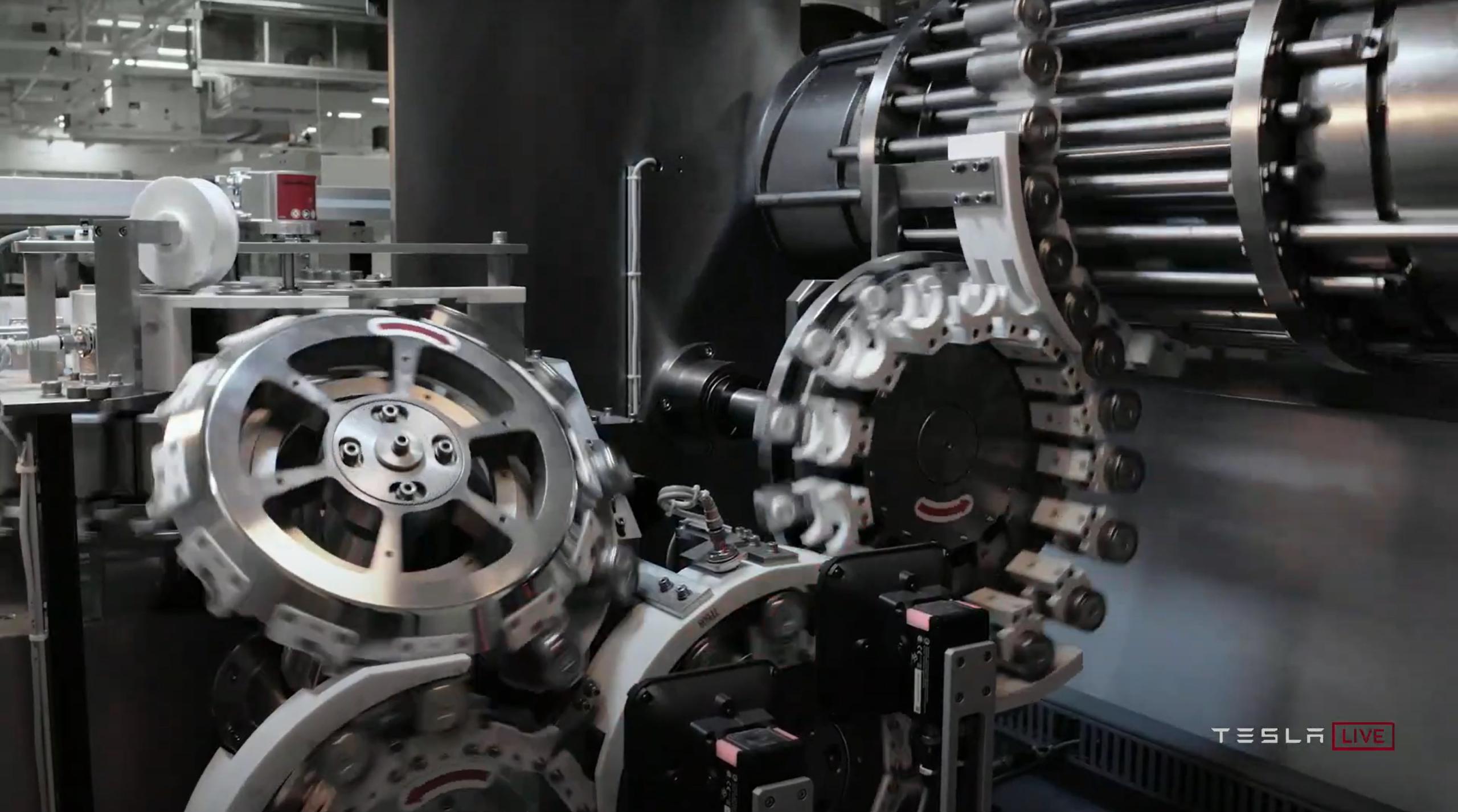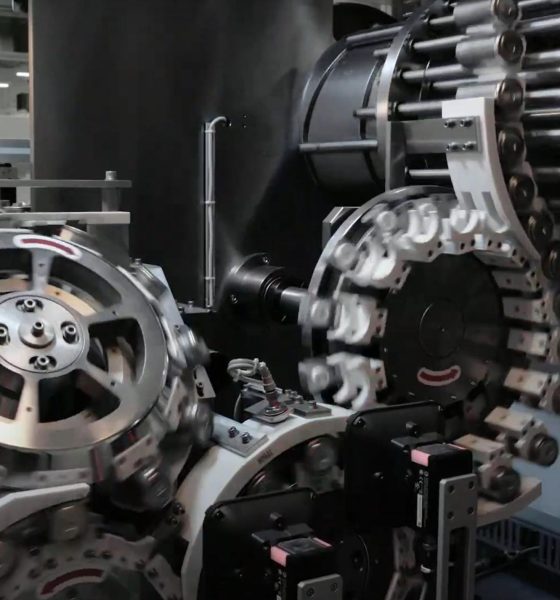

Investor's Corner
Tesla just changed the EV game with Battery Day, and Wall Street is disappointed
Tesla (NASDAQ:TSLA) effectively changed the electric car game with its Battery Day event by outlining a path towards an annual output of 20 million vehicles and a battery cell production output of 3 TWh by 2030. That’s undoubtedly impressive, and it gives a great glimpse at what is to come for Tesla’s electric cars and energy storage devices in the coming years. Yet despite all these game-changing announcements, TSLA traders and Wall Street seem to be disappointed.
A look at reactions from Wall Street analysts, traders, Tesla critics, and battery experts following the highly-anticipated event shows that Battery Day has received a polarizing reception at best. This is best represented by the views of two people who are among the most knowledgable in battery technology, Simon Moores from Benchmark Mineral Intelligence and Dr. Ying Shirley Meng, a battery researcher and professor at the University of California.
Following the Battery Day event, Moores noted that the event was “more fantasy and incorrect statements than reality.” Dr. Meng, on the other hand praised Tesla on its new cell format, silicon anode, its diversified cathode materials choices, and recycling initiatives, to name a few. In a later tweet, Dr. Meng noted that it’s always an easier job to critique than to execute and deliver.
Wall Street, for its part, appears to have been generally disappointed with the event, with TSLA stock plunging up to 9% on Wednesday’s intraday. Part of this, as noted in a Bloomberg report, was due to Battery Day’s “letdown.” A notable part of this letdown was the fact that the innovations outlined in the event were due to be implemented within the next few years, as noted by Roth Capital Partners analyst Craig Irwin. “Nothing Musk discussed about batteries is a done deal. There was nothing tangible,” he said.
UBS analyst Patrick Hummel took a more neutral stance, though he also noted the high expectations for the event would likely affect TSLA negatively. “Given the high expectations into the event, we think the market will initially respond negatively to the relatively long timelines of the innovations and the lack of granularity,” Hummel noted.
Longtime Tesla bull Gene Munster, for his part, noted that TSLA investors may be demanding major innovations in a shorter timeframe than those announced in Battery Day. “The challenge with the stock is that everything they are talking about is three years away. I think traditional auto is in an even tighter spot, but Tesla investors want this tomorrow,” Munster said.
This is not the first time that a major technical presentation from Tesla was met with a negative movement in TSLA stock. Last year’s Autonomy Day was followed by a steep dive in TSLA as well, and for much of the same reasons. Tesla’s Autonomy Day received some criticism for discussing technology that is still to come, much like how Battery Day is now being criticized for outlining innovations that are not yet being implemented in the company’s vehicles today.
Inasmuch as the responses to Battery Day are disappointing, however, the fact remains that Tesla’s upcoming projects on the battery design and production front could very well pave the way for the company to achieve its ambitious goal of accelerating the world’s transition to sustainable energy. The event, after all, did not only showcase the design of Tesla’s next-generation 4680 cells, it also described how the company could transition from producing batteries at the “Giga” level to the “Tera” level. Massive cost reductions on the battery front were also discussed, which could result in Tesla finally releasing a vehicle that’s priced at $25,000, with satisfactory performance and Autopilot.
Disclosure: I am long TSLA.

Investor's Corner
Tesla stock closes at all-time high on heels of Robotaxi progress

Tesla stock (NASDAQ: TSLA) closed at an all-time high on Tuesday, jumping over 3 percent during the day and finishing at $489.88.
The price beats the previous record close, which was $479.86.
Shares have had a crazy year, dipping more than 40 percent from the start of the year. The stock then started to recover once again around late April, when its price started to climb back up from the low $200 level.
This week, Tesla started to climb toward its highest levels ever, as it was revealed on Sunday that the company was testing driverless Robotaxis in Austin. The spike in value pushed the company’s valuation to $1.63 trillion.
Tesla Robotaxi goes driverless as Musk confirms Safety Monitor removal testing
It is the seventh-most valuable company on the market currently, trailing Nvidia, Apple, Alphabet (Google), Microsoft, Amazon, and Meta.
Shares closed up $14.57 today, up over 3 percent.
The stock has gone through a lot this year, as previously mentioned. Shares tumbled in Q1 due to CEO Elon Musk’s involvement with the Department of Government Efficiency (DOGE), which pulled his attention away from his companies and left a major overhang on their valuations.
However, things started to rebound halfway through the year, and as the government started to phase out the $7,500 tax credit, demand spiked as consumers tried to take advantage of it.
Q3 deliveries were the highest in company history, and Tesla responded to the loss of the tax credit with the launch of the Model 3 and Model Y Standard.
Additionally, analysts have announced high expectations this week for the company on Wall Street as Robotaxi continues to be the focus. With autonomy within Tesla’s sights, things are moving in the direction of Robotaxi being a major catalyst for growth on the Street in the coming year.
Elon Musk
Tesla needs to come through on this one Robotaxi metric, analyst says
“We think the key focus from here will be how fast Tesla can scale driverless operations (including if Tesla’s approach to software/hardware allows it to scale significantly faster than competitors, as the company has argued), and on profitability.”

Tesla needs to come through on this one Robotaxi metric, Mark Delaney of Goldman Sachs says.
Tesla is in the process of rolling out its Robotaxi platform to areas outside of Austin and the California Bay Area. It has plans to launch in five additional cities, including Houston, Dallas, Miami, Las Vegas, and Phoenix.
However, the company’s expansion is not what the focus needs to be, according to Delaney. It’s the speed of deployment.
The analyst said:
“We think the key focus from here will be how fast Tesla can scale driverless operations (including if Tesla’s approach to software/hardware allows it to scale significantly faster than competitors, as the company has argued), and on profitability.”
Profitability will come as the Robotaxi fleet expands. Making that money will be dependent on when Tesla can initiate rides in more areas, giving more customers access to the program.
There are some additional things that the company needs to make happen ahead of the major Robotaxi expansion, one of those things is launching driverless rides in Austin, the first city in which it launched the program.
This week, Tesla started testing driverless Robotaxi rides in Austin, as two different Model Y units were spotted with no occupants, a huge step in the company’s plans for the ride-sharing platform.
Tesla Robotaxi goes driverless as Musk confirms Safety Monitor removal testing
CEO Elon Musk has been hoping to remove Safety Monitors from Robotaxis in Austin for several months, first mentioning the plan to have them out by the end of 2025 in September. He confirmed on Sunday that Tesla had officially removed vehicle occupants and started testing truly unsupervised rides.
Although Safety Monitors in Austin have been sitting in the passenger’s seat, they have still had the ability to override things in case of an emergency. After all, the ultimate goal was safety and avoiding any accidents or injuries.
Goldman Sachs reiterated its ‘Neutral’ rating and its $400 price target. Delaney said, “Tesla is making progress with its autonomous technology,” and recent developments make it evident that this is true.
Investor's Corner
Tesla gets bold Robotaxi prediction from Wall Street firm
Last week, Andrew Percoco took over Tesla analysis for Morgan Stanley from Adam Jonas, who covered the stock for years. Percoco seems to be less optimistic and bullish on Tesla shares, while still being fair and balanced in his analysis.

Tesla (NASDAQ: TSLA) received a bold Robotaxi prediction from Morgan Stanley, which anticipates a dramatic increase in the size of the company’s autonomous ride-hailing suite in the coming years.
Last week, Andrew Percoco took over Tesla analysis for Morgan Stanley from Adam Jonas, who covered the stock for years. Percoco seems to be less optimistic and bullish on Tesla shares, while still being fair and balanced in his analysis.
Percoco dug into the Robotaxi fleet and its expansion in the coming years in his latest note, released on Tuesday. The firm expects Tesla to increase the Robotaxi fleet size to 1,000 vehicles in 2026. However, that’s small-scale compared to what they expect from Tesla in a decade.
Tesla expands Robotaxi app access once again, this time on a global scale
By 2035, Morgan Stanley believes there will be one million Robotaxis on the road across multiple cities, a major jump and a considerable fleet size. We assume this means the fleet of vehicles Tesla will operate internally, and not including passenger-owned vehicles that could be added through software updates.
He also listed three specific catalysts that investors should pay attention to, as these will represent the company being on track to achieve its Robotaxi dreams:
- Opening Robotaxi to the public without a Safety Monitor. Timing is unclear, but it appears that Tesla is getting closer by the day.
- Improvement in safety metrics without the Safety Monitor. Tesla’s ability to improve its safety metrics as it scales miles driven without the Safety Monitor is imperative as it looks to scale in new states and cities in 2026.
- Cybercab start of production, targeted for April 2026. Tesla’s Cybercab is a purpose-built vehicle (no steering wheel or pedals, only two seats) that is expected to be produced through its state-of-the-art unboxed manufacturing process, offering further cost reductions and thus accelerating adoption over time.
Robotaxi stands to be one of Tesla’s most significant revenue contributors, especially as the company plans to continue expanding its ride-hailing service across the world in the coming years.
Its current deployment strategy is controlled and conservative to avoid any drastic and potentially program-ruining incidents.
So far, the program, which is active in Austin and the California Bay Area, has been widely successful.








